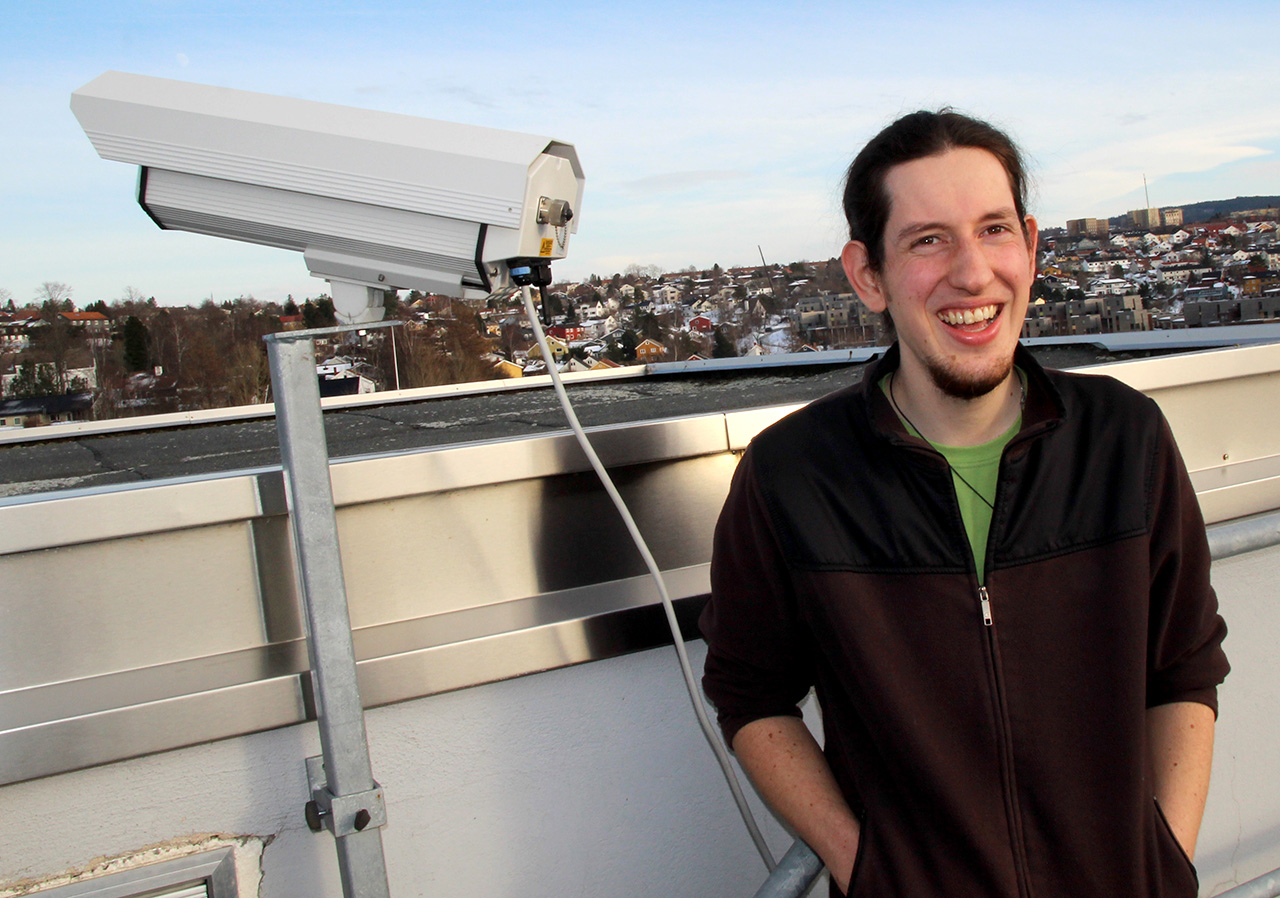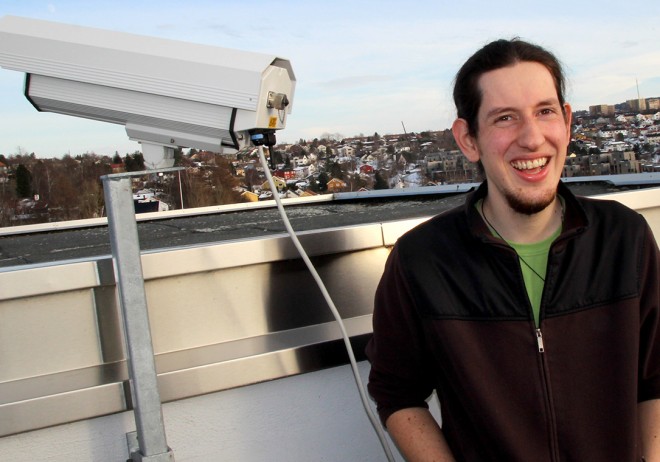![]() As a part of my doctoral degree I will learn more about what happens 90 kilometers over our heads. What happens up there today will influence the weather and climate here at Earth in the weeks to come.
As a part of my doctoral degree I will learn more about what happens 90 kilometers over our heads. What happens up there today will influence the weather and climate here at Earth in the weeks to come.
The atmosphere is really more than just air to breath and rain and snow. It warms us – without it we would be about 30 degrees cooler here, it protects us from incoming meteoroids and builds the scene for the fabulous light-show we call northern lights. Yet, many things “up there” are still a mystery to us.
To learn more about all this, we have to become creative. For us, that means looking with a telescope to the darkest spots of the night sky, to listen to burning meteors or to look at the warmth of the ozone, high up in the atmosphere. Because, if we want to know the weather of tomorrow, we have to understand the atmosphere today.

Christoph Franzen with the all-sky-camera on top of the natural science building in Gløshaugen. This camera detects nights with northern lights to separate between effects from the aurora and from the light from the hydroxyl. Photo: Per Henning / NTNU
Looking at the darkest spot of the night sky
I’m specializing in the warmth of the hydroxyl molecule (OH) – which is mostly contained in a thin layer at about 90 km altitude, where northern lights have a strong influence as well. This altitude is already too high for weather balloons, so I’m using a Telescope, actually pointing it towards the darkest spots in the sky, and not towards stars, which seems rather pointless in the classical usage of telescopes.
But there we can see the very dim light that lies outside the visible range, which comes from the hydroxyl and changes with the temperature of the surrounding atmosphere. We are observing these differences via spectroscopy.This can give us new measurements of the temperature, and with a little computational effort, the density of the atmosphere at a height of about 90km.
Space weather and Earth weather
We find that the weather in this part of the atmosphere can influence long term weather and climate down here. Measurements like the ones we are doing, provide important input for future climate models and weather forecasts. With the research results from the research group I am a part of, we hope to better understand the Earth’s whole atmosphere and its natural variability.
